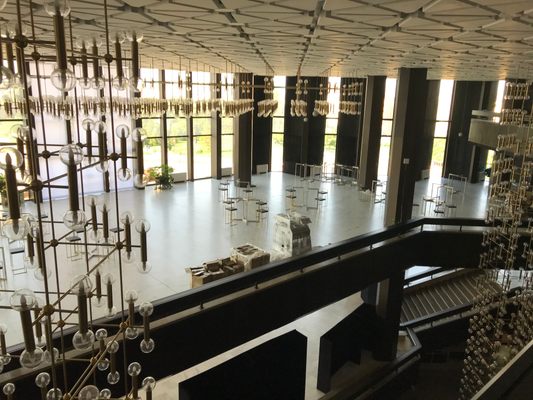About
The National Palace of Culture in central Sofia is a spectacular example of the scope and ambition of architectural design under the Communist government in Bulgaria.
Lyudmila Zhivkova, daughter of former communist leader of Bulgaria Todor Zhivkov, had the idea for a national exhibition space. Lyudmila worked for her father's communist government and had an influential role in the promotion of Bulgarian arts and culture.
Works on the project were completed in 1981, which coincided with Bulgaria's 1300th anniversary. Alexander Barov, a Bulgarian architect, was the lead designer on the Palace. The Palace has an official symbol: a bronze sun representative of the old ceilings in traditional houses.
The venue spans a whopping 15,000 square meters of concert venues, conference halls, gallery space, theaters and cinemas. Dozens of sculptures, paintings and wood carvings decorate the inside of the building's many rooms.
Each year, the Palace puts on a huge New Years event, which started in 1984. Some of the most famed contemporary artists have performed their work at the Palace including Andrea Bocelli, the opera singer, violinist Nigel Kennedy and soprano Darina Takova.
The building, known colloquially by its initials and pronounced as the acronym EnDuhKah, is only part of the complex. Everyday people of all ages visit the enormous park fronting the entrance. Dogs are walked, young people do tricks on skateboards and bikes, children play in the playground, street musicians play, and the cafes are full no matter the weather. A section of the Berlin Wall stands near one entry point and there is also a small Bulgarian Orthodox chapel and a monument (sadly derivative of the Vietnam Memorial in DC) to the victims of Communism.
Related Tags
Know Before You Go
There are buses (including the 204 and 604), trolleys (including the 5), and trams (including the 1) all with stops at NDK. The blue line of the Sofia metro also has an NDK stop.
Published
July 26, 2016











































